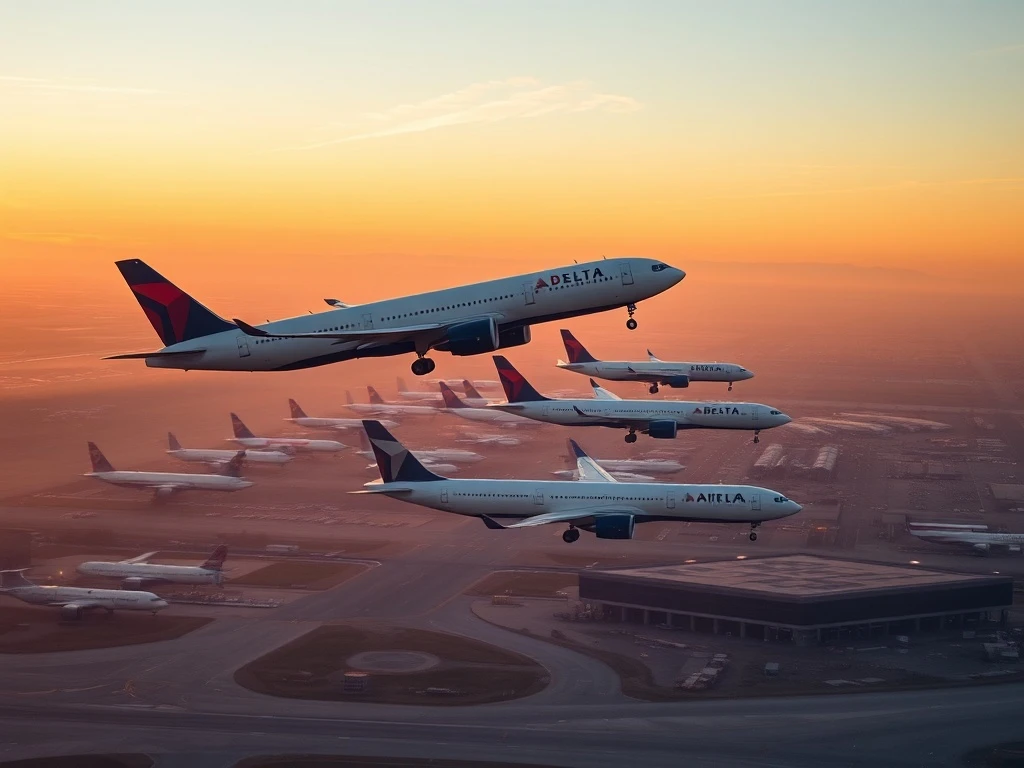Delta Air Lines has launched an aggressive expansion strategy that will dramatically reshape the competitive landscape of the aviation industry by summer 2026. This bold move represents one of the most significant route network expansions in recent airline history, directly challenging competitors across multiple markets. The Delta Air Lines expansion includes over 20 new domestic and international routes, targeting both leisure and business travelers. Consequently, this strategic initiative positions Delta for substantial market share growth while potentially triggering intensified fare wars among major carriers.
Delta Air Lines Expansion Strategy Details
The comprehensive Delta Air Lines expansion focuses on several key markets simultaneously. First, the airline will add ten new transcontinental routes connecting East Coast hubs with West Coast destinations. Additionally, international service will expand to five new European cities and three Asian markets. This expansion specifically targets routes with high yield potential and limited current competition. Moreover, Delta plans to increase frequency on existing profitable routes by 15-20%. The airline‘s management emphasizes that this growth aligns perfectly with their fleet modernization program.
Competitive Impact of Delta’s Growth Plans
Competitors have already begun responding to the Delta Air Lines expansion announcement. American Airlines and United have both indicated they will review their own route networks. Industry analysts predict several outcomes from this expansion. Firstly, consumers will benefit from increased options and potentially lower fares. Secondly, smaller regional carriers may face pressure on overlapping routes. Furthermore, airport authorities at targeted destinations welcome the additional traffic. However, some experts caution that overcapacity could eventually affect industry profitability.
Market Analysis and Financial Implications
The Delta Air Lines expansion requires substantial capital investment but promises significant returns. Key financial considerations include:
• Fleet utilization – Maximizing aircraft usage across new routes
• Revenue projections – Expected 12-15% revenue growth from new markets
• Cost management – Maintaining cost discipline during rapid expansion
• Market share – Projected 5-7% market share increase in targeted regions
Investors have responded positively to the expansion announcement, with Delta’s stock showing upward momentum. Meanwhile, aircraft manufacturers stand to benefit from additional orders. The expansion also creates approximately 2,000 new jobs across various operational areas.
Operational Challenges and Solutions
Implementing such a massive Delta Air Lines expansion presents numerous operational challenges. The airline must address several critical areas. Crew training and scheduling requires careful planning to support new routes. Additionally, maintenance facilities need expansion to handle increased aircraft rotations. Ground operations at new destinations must meet Delta’s service standards. The airline has developed a phased implementation approach to manage these challenges effectively. They plan to utilize their extensive operational experience from previous growth periods.
Future Industry Outlook
The Delta Air Lines expansion signals confidence in long-term travel demand recovery. Industry observers view this move as a strategic positioning for post-pandemic growth. Other major carriers will likely announce their own expansion plans in response. The aviation industry continues evolving toward hub-focused strategies with point-to-point supplementation. This expansion reinforces Delta’s commitment to their Atlanta hub while strengthening other key facilities. The competitive dynamics of the airline industry may shift significantly by 2026.
FAQs
When will the new Delta routes begin operation?
The expansion routes will phase in throughout early 2026, with full implementation by summer 2026.
Which destinations are included in Delta’s expansion?
The expansion includes both domestic routes like Austin-Newark and international routes to cities like Lisbon and Seoul.
How will this expansion affect airfares?
Increased competition typically leads to lower fares initially, though prices may stabilize as markets mature.
What aircraft will Delta use for new routes?
The airline will utilize a mix of narrow-body and wide-body aircraft depending on route distance and demand.
Will Delta hire new employees for this expansion?
Yes, the expansion will create approximately 2,000 new positions across various operational areas.
How does this expansion compare to previous Delta growth initiatives?
This represents Delta’s largest single expansion in the past decade, exceeding their 2018 growth initiative by 40%.








